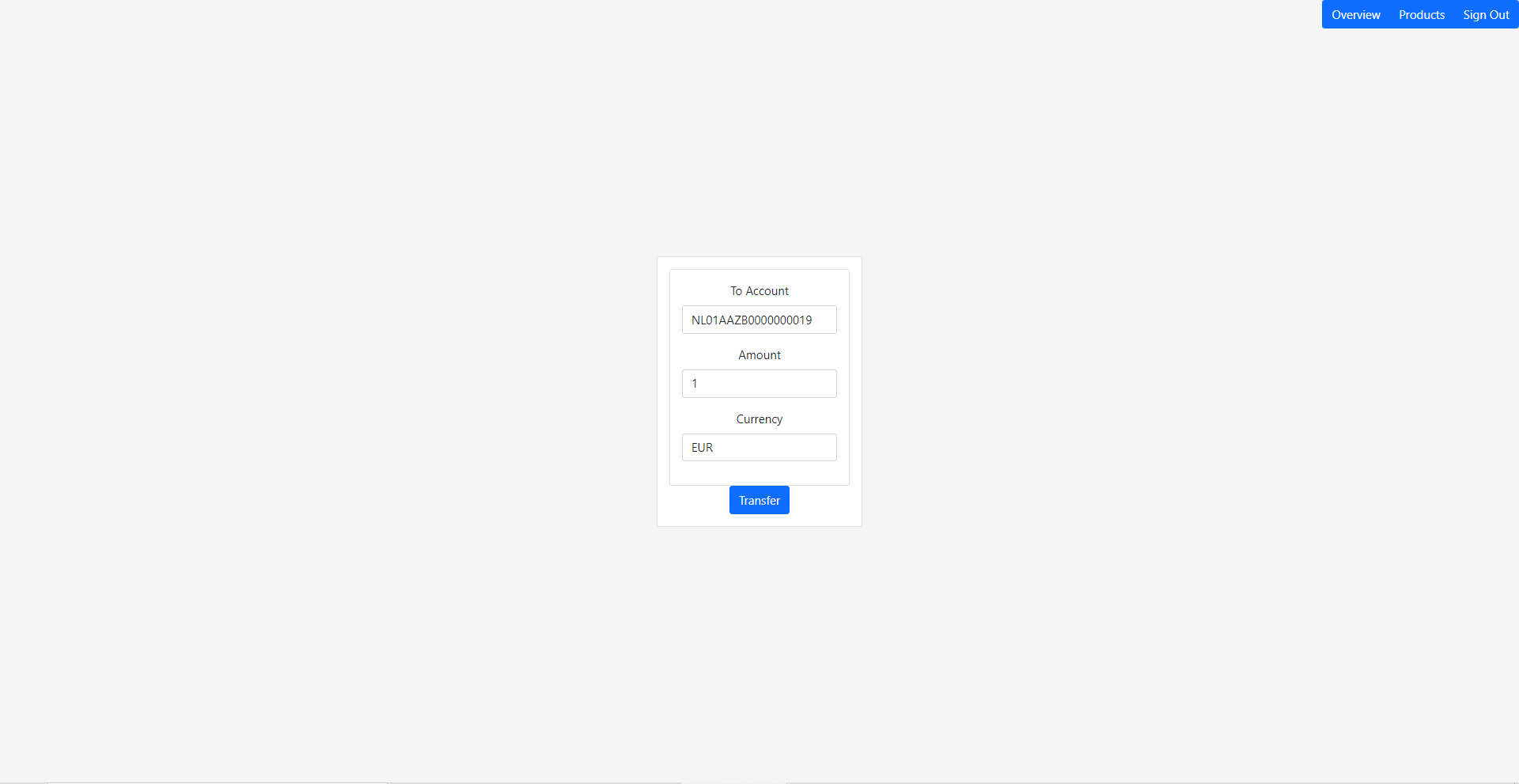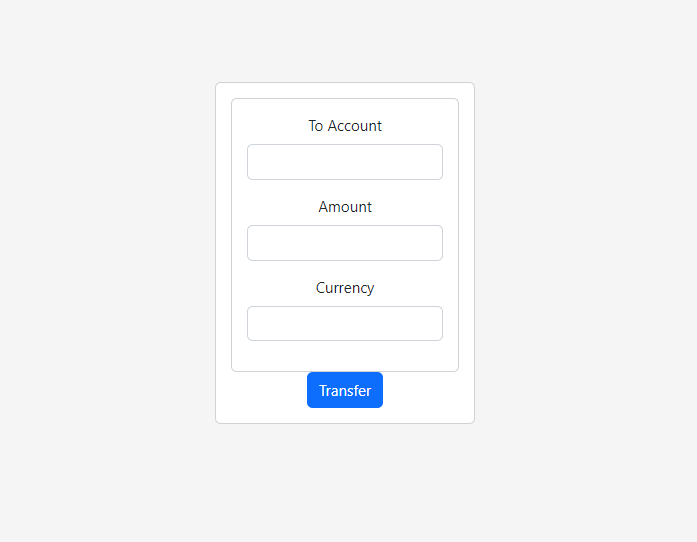Part 4: Creating a Transfer Form
Overview
The overview we built in the previous section is nice, showing us the information belonging to that account. It also shows us a table where all the transactions belonging to that account are listed. However, for it to list transactions, we need to be able to make some!
So what would our transfer functionality have to look like? We of course would have to be able to enter the account number we are sending the money to, together with the amount, and currency. Something along the lines of this:
Creating the Transfer Form
We create a Transfers.js in our main folder, providing us the following structure:
src
- subcomponents
- main
- Overview.js
- Transfers.js
In this Transfers.js we populate it with our template code:
frontend/src/main/Transfers.js
import {Component} from 'react'
class TransferPage extends Component {
render () {
return (
<>
</>
)
}
}
export default TransferPage
We will use our newly-found Card components, to fill it up, together with a Form component.
Modifying our code to import these changes, it looks like this:
frontend/src/main/Transfers.js
import {Component} from 'react'
import {Card, Form} from 'react-bootstrap'
class TransferPage extends Component {
render () {
return (
<>
<Card>
<Card.Body>
<Form.Group className="mb-3">
<Form.Label>To Account</Form.Label>
<Form.Control/>
</Form.Group>
<Form.Group className="mb-3">
<Form.Label>Amount</Form.Label>
<Form.Control/>
</Form.Group>
<Form.Group className="mb-3">
<Form.Label>Currency</Form.Label>
<Form.Control/>
</Form.Group>
</Card.Body>
</Card>
</>
)
}
}
export default TransferPage
The className="mb-3" ensures we get some more space.
This is nice, but we also need to add a button that initiates the transfer.
We will add a button, and adapt the code slightly, because the code we wrote above is the form containing the information, and a separate conceptual part is the button, which are both shown on the page that contains the transfer functionality:
frontend/src/main/Transfers.js
import {Component} from 'react'
import {Card, Form, Button} from 'react-bootstrap'
class TransferPage extends Component {
render () {
return (
<>
<Card>
<Card.Body>
<TransferForm/>
<Button
variant="primary">Transfer
</Button>
</Card.Body>
</Card>
</>
)
}
}
class TransferForm extends Component {
render () {
return (
<>
<Card>
<Card.Body>
<Form.Group className="mb-3">
<Form.Label>To Account</Form.Label>
<Form.Control/>
</Form.Group>
<Form.Group className="mb-3">
<Form.Label>Amount</Form.Label>
<Form.Control/>
</Form.Group>
<Form.Group className="mb-3">
<Form.Label>Currency</Form.Label>
<Form.Control/>
</Form.Group>
</Card.Body>
</Card>
</>
)
}
}
export default TransferPage
We import the Button component, and add it, and change the layout a bit. The “primary” part in the button makes it blue, because I’m a bit sick of all the white/grey.
Going back to App.js, we change the code a bit so that we can see what our TransferPage looks like:
frontend/src/App.js
import '../node_modules/bootstrap/dist/css/bootstrap.min.css';
import './App.css';
import Overview from './subcomponents/main/Overview'
import TransferPage from './subcomponents/main/Transfers'
function App() {
return (
<div className = "app">
<TransferPage/>
</div>
);
}
export default App;
Saving and going to localhost:3000 gives us:
Nice!


